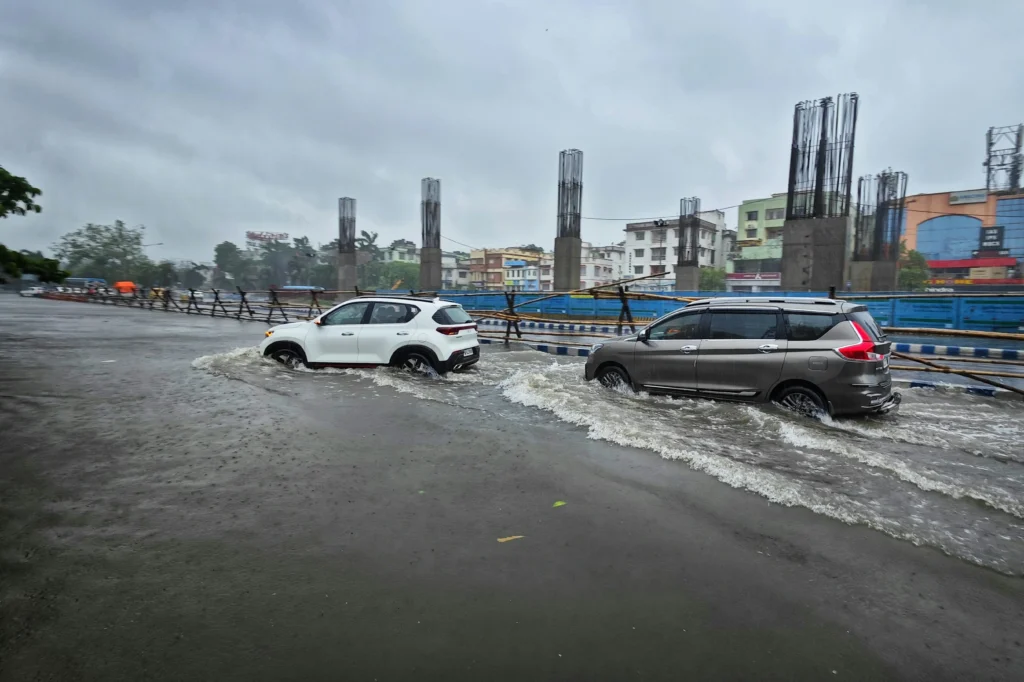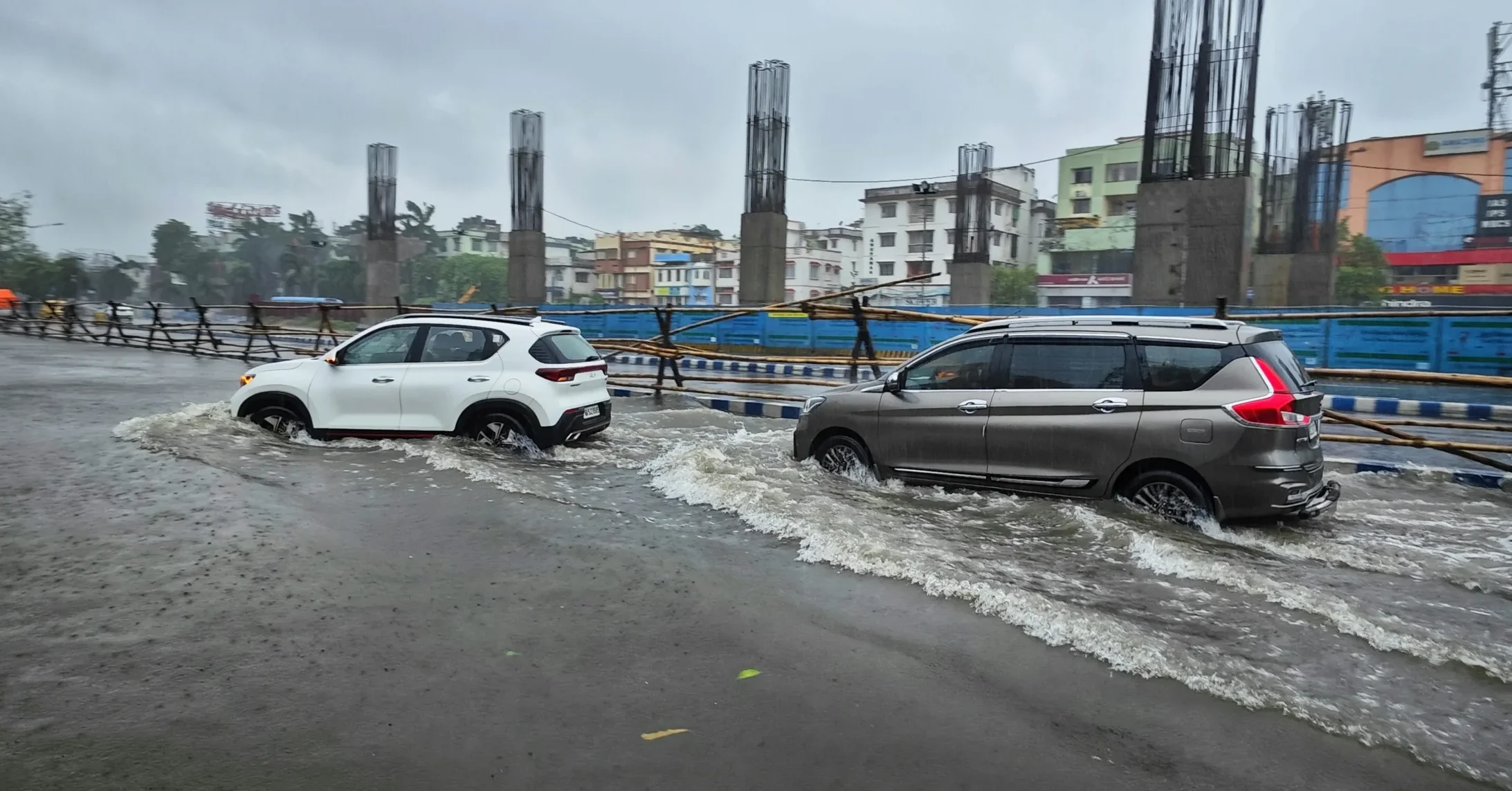
Extreme Rainfall Alert in Mumbai: Why It Matters
Extreme Rainfall Alert has been officially issued for Mumbai as the city faces one of the most intense monsoon spells in recent history. In just five days, the Santacruz Observatory recorded 870 mm of rain, nearly crossing the seasonal average of 2,319 mm for the entire June–September monsoon.
This development has raised alarms across civic bodies, weather agencies, and citizens alike. With 40 more days of monsoon still ahead, experts warn that Mumbai could witness record-breaking rainfall totals this year.
Mumbai’s Rainfall by the Numbers
-
Santacruz Station: 2,311 mm rainfall recorded since June.
-
5-Day Deluge: 870 mm, almost half of the seasonal quota.
-
Seasonal Average: 2,319 mm expected between June–September.
-
Remaining Days: 40 more days left in the official monsoon season.
According to the Indian Express report, July was one of the driest months since 2015 with only 798 mm rainfall. However, August rains turned the deficit into an excess.
How Extreme Rainfall Impacts Daily Life
The Extreme Rainfall Alert is more than just a statistic—it directly affects Mumbaikars:
-
Urban Flooding: Major areas reported heavy waterlogging within hours of the downpour.
-
Transport Disruption: Suburban trains, BEST buses, and flights saw frequent delays.
-
Health Concerns: Stagnant water creates breeding grounds for diseases like dengue and malaria.
-
Economic Cost: Businesses lose working hours due to travel chaos and office shutdowns.
For safety, citizens are advised to check real-time weather updates on the IMD official website.
Historical Context: Dry July Turns into Wettest August
Interestingly, while June and July showed below-average rainfall, the sudden surge in August has put Mumbai back in the headlines. The city’s climate patterns highlight how climate change may be intensifying rainfall events—fewer rainy days, but more extreme downpours.
This shift mirrors findings in global studies on changing monsoon patterns, such as the World Meteorological Organization (WMO) reports on climate change and rainfall extremes.
Government Response and Safety Measures
The BMC (Brihanmumbai Municipal Corporation) has activated its disaster management units to respond to flood alerts, waterlogging, and tree fall incidents. Pumping stations are working round-the-clock, while traffic police have issued advisories for commuters.
Citizens are urged to:
-
Avoid low-lying flood-prone areas.
-
Follow updates on official Mumbai Police Twitter handles.
-
Use mobile apps like Maha Mumbai Rains for real-time alerts.
Future Outlook: What 40 Days of Monsoon Still Mean
With the Extreme Rainfall Alert in effect, meteorologists believe Mumbai could far exceed its 2,319 mm monsoon average this year. If current rainfall intensity continues, the city may break historical records by mid-September.
Internal experts at our weather desk also highlight how this could impact Mumbai’s reservoirs, ensuring water supply stability but also heightening risks of flood discharge into surrounding areas.
👉 For more details, check our internal coverage on Mumbai rain affecting schools and flights
Conclusion: Preparing for More Extreme Rainfall
Mumbai’s Extreme Rainfall Alert highlights how unpredictable and intense the monsoon has become. In just five days, the city has absorbed almost its entire seasonal rainfall, with weeks still ahead.
Preparedness, awareness, and community resilience will be key as citizens adapt to frequent, high-intensity rainfall events. While this ensures water security, it also demands stronger urban infrastructure to withstand such monsoon shocks.
Final Verdict: What Mumbaikars Should Do Next
The Extreme Rainfall Alert is not just about numbers—it’s about safety and preparation. Citizens should keep an eye on real-time IMD alerts, stock up on essentials, and avoid unnecessary travel during peak showers.
At the same time, authorities must invest in stronger drainage systems, sustainable urban planning, and flood management projects to safeguard India’s financial capital from future disasters.
While rainfall replenishes Mumbai’s reservoirs and secures water for millions, it also exposes the city’s fragile infrastructure. The coming weeks will test how resilient Mumbai truly is against nature’s fury.
❓ Frequently Asked Questions (FAQ) on Extreme Rainfall Alert in Mumbai
1. What does an Extreme Rainfall Alert mean?
An Extreme Rainfall Alert is issued when weather authorities predict unusually high rainfall that can cause flooding, waterlogging, and major disruption to normal life. In Mumbai’s case, it means heavy showers exceeding safe thresholds within a short span of time.
2. How much rain did Mumbai get during the Extreme Rainfall Alert?
Mumbai recorded 870 mm of rainfall in just five days, nearly touching the seasonal average of 2,319 mm. With 40 days of monsoon still left, experts warn that the city may experience record-breaking rainfall totals this year.
3. How does extreme rainfall impact daily life in Mumbai?
Extreme rainfall often leads to:
-
Severe waterlogging in low-lying areas.
-
Train and flight delays, causing commuter chaos.
-
Higher risk of diseases like dengue and malaria due to stagnant water.
-
Disruption of businesses and schools.
4. What precautions should citizens take during an Extreme Rainfall Alert?
Mumbaikars should:
-
Avoid flood-prone areas and unnecessary travel.
-
Follow updates from the India Meteorological Department (IMD) and Mumbai Police.
-
Keep emergency supplies ready, including medicines, drinking water, and power banks.
-
Use official apps like Maha Mumbai Rains for real-time alerts.
5. Will Mumbai receive more rain after this Extreme Rainfall Alert?
Yes. With 40 days of monsoon remaining, experts predict Mumbai may receive well above its seasonal average. The IMD continues to monitor the situation and issue updated rainfall alerts.
